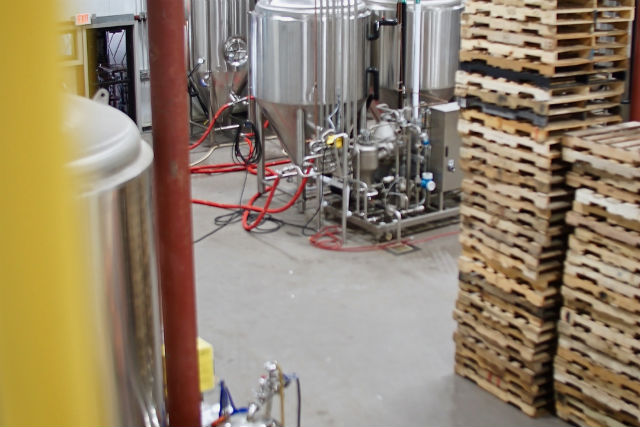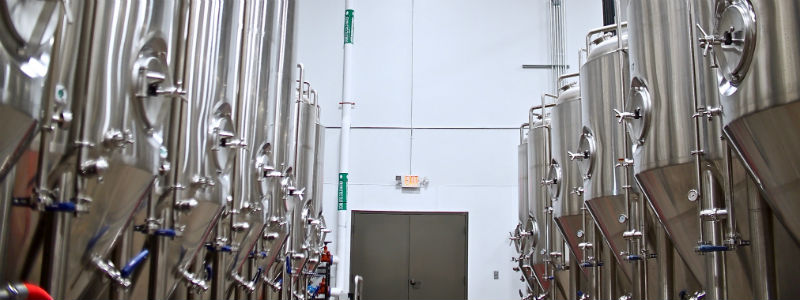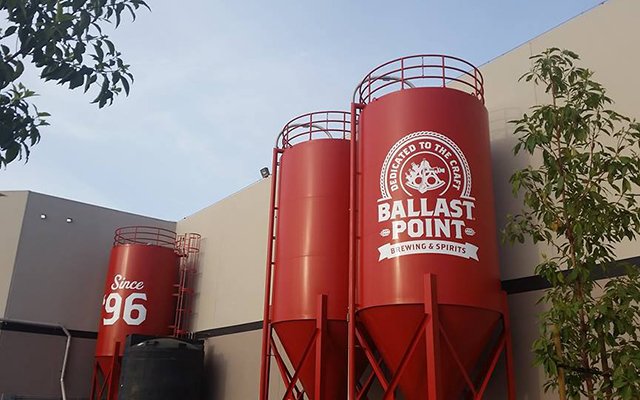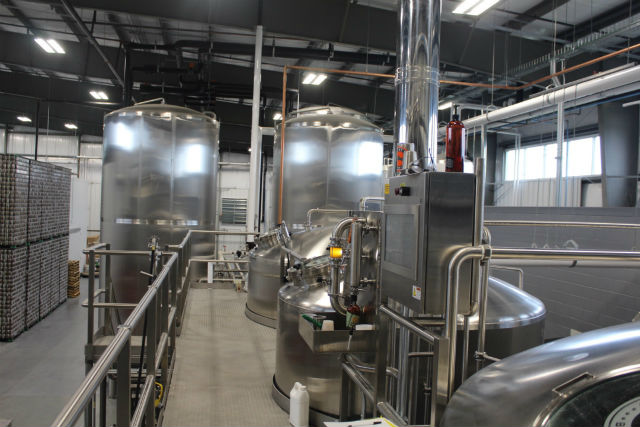
Drew Yeager said that Fat Bottom in Nashville has always tried to be efficient when ordering raw materials.
“Though we previously only used bagged malt, we would order five-plus pallets at a time to make the most of shipping and pricing tiers,” he explained. “With the build out of our new facility, we knew we wanted to have a silo for our base grain.”
The brewery started with one 50,000-pound capacity silo, but designed the pad to add two additional silos in the future.
“I think the largest improvement to our malt ordering has come from ordering a container (41,580 lbs) directly from Weyermann,” Yeager, the brewery’s Brewmaster, said. “It saves us a lot of money and allows us to minimize the number of times I get close to running out of grain.”
Nothing comes without its difficulties though. It takes Fat Bottom 12-14 weeks from the time the order is placed until the container arrives.
To give perspective, a container is about 14 weeks supply of grain for the brewer.
“So I am ordering the next container the same week a container arrives or earlier,” Yeager said. “What time I use to spend on ordering grain, I now spend on projecting depletion rates.”
This is the final Q&A focusing on malt storage. You can read the entire article in the March/April issue of Brewer Magazine. Thanks to all the breweries for participating. It has been well received.
 BREWER: How has malt storage on site changed for you as you have grown?
BREWER: How has malt storage on site changed for you as you have grown?
YEAGER: I laughed to myself as I read this question. Flashbacks to the mental image of grain pallets on top of other grain pallets, stuffed in every inch of possible space we had to our name. I used to spend four labor hours a day, just moving pallets out to the sidewalk and back in at night. Thankfully, everything has its place now. We made sure to dedicate a lot of space to our warehouse and put a lot of time into designing the layout. The addition of the silo allows us to store all of the base grain outside, which definitely helps free up storage space that always seems to fill up faster than you think it will.
BREWER: Do you have a base malt for the majority of your brands? Was that always the case? Did your portfolio change at all to be able to have a more bulk order of one base malt?
YEAGER: We have always used Rahr pale as our base malt for the majority of our brands. Luckily, Rhar does bulk malt as well so we were not forced to change our recipes. I did consider changing our base grain when we moved. I decided all of the changes we were already making to our mill, yeast management, and filtration, I did not want to add any other sources of variation at that time. We also considered changing our pilsner malt to a different supplier. However, the price per pound with buying a direct container was close enough to the silo price, I decided there was more value in consistency than what we would save by going to a silo.
BREWER: How did you factor in things like weather, logistics and other such things when figuring out new storage areas?
YEAGER: Moving from a location where I had to check the weather every morning to see what we could or couldn’t move outside to gain space to work, it was obvious that our new storage area needed a roof. When making the plans, we made sure we had enough room for a forklift to comfortably maneuver, the ceiling heights were high enough to maximize storage and we put in guides on the floor to ensure the can pallets don’t encroach into another lane. I think one thing that sets us apart from other breweries our size is our cold storage. With over 100 pallet spots, we sized our cooler large enough to handle the growth we have planned. Additionally, we added a drive-in door to our hop freezer through the cooler. This allows us to be more energy efficient with regards to temperature loss when we receive new pallets of hops.
BREWER: When did a grain silo become a part of the conversation to purchase? How has it been a good ROI for you?
YEAGER: I’m not sure that a silo was ever not part of the conversation, we just physically didn’t have a place we could place one at our previous location. Once we purchased our own land to build on, a silo was probably one of the only things I didn’t have to sway our owner, Ben, on. The ROI on a silo is one of the shortest I have seen in brewing equipment. For us, the silo paid for itself in six months from the amount we saved per pound. The difficulty is getting use to the cash flow difference from paying $2,000 every week, to $16,000 every silo fill.
Read more about silos and malt storage in the March/April issue of Brewer Magazine.






Be the first to comment